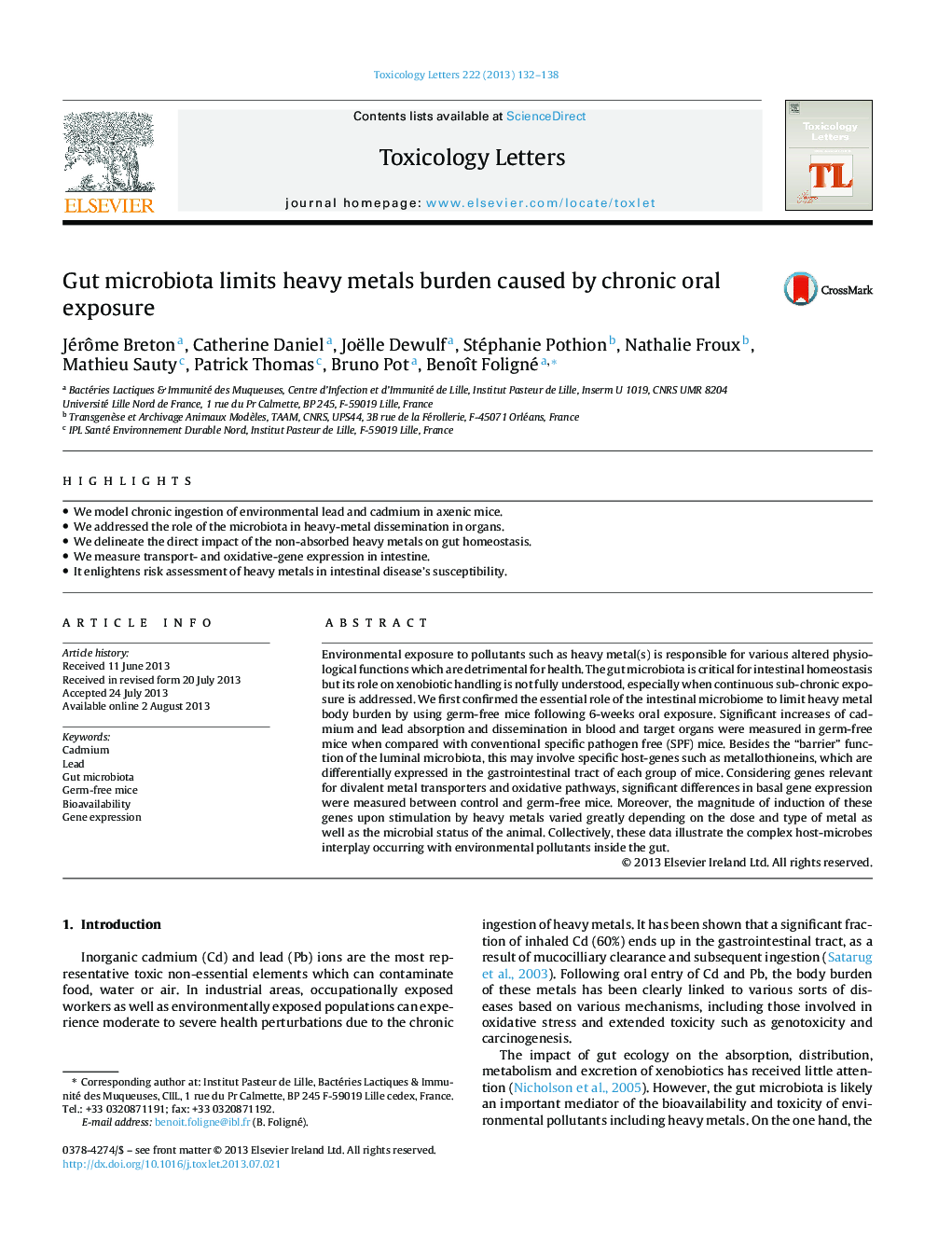| Article ID | Journal | Published Year | Pages | File Type |
|---|---|---|---|---|
| 5860537 | Toxicology Letters | 2013 | 7 Pages |
Abstract
Environmental exposure to pollutants such as heavy metal(s) is responsible for various altered physiological functions which are detrimental for health. The gut microbiota is critical for intestinal homeostasis but its role on xenobiotic handling is not fully understood, especially when continuous sub-chronic exposure is addressed. We first confirmed the essential role of the intestinal microbiome to limit heavy metal body burden by using germ-free mice following 6-weeks oral exposure. Significant increases of cadmium and lead absorption and dissemination in blood and target organs were measured in germ-free mice when compared with conventional specific pathogen free (SPF) mice. Besides the “barrier” function of the luminal microbiota, this may involve specific host-genes such as metallothioneins, which are differentially expressed in the gastrointestinal tract of each group of mice. Considering genes relevant for divalent metal transporters and oxidative pathways, significant differences in basal gene expression were measured between control and germ-free mice. Moreover, the magnitude of induction of these genes upon stimulation by heavy metals varied greatly depending on the dose and type of metal as well as the microbial status of the animal. Collectively, these data illustrate the complex host-microbes interplay occurring with environmental pollutants inside the gut.
Related Topics
Life Sciences
Environmental Science
Health, Toxicology and Mutagenesis
Authors
Jérôme Breton, Catherine Daniel, Joëlle Dewulf, Stéphanie Pothion, Nathalie Froux, Mathieu Sauty, Patrick Thomas, Bruno Pot, Benoît Foligné,
